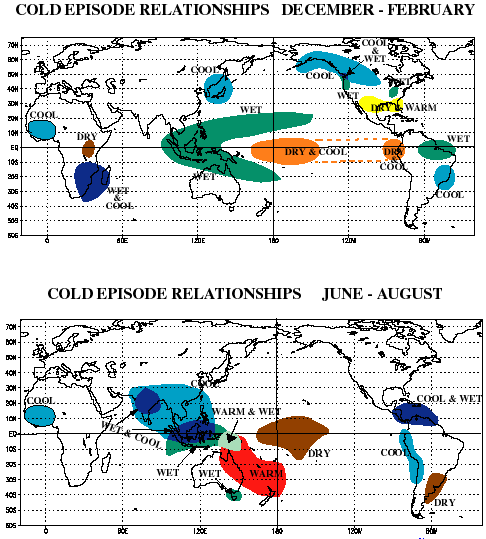Why does the earth get so cold in winter even it gets hotter?
What is La Niña?
The name La Niña originates from Spanish, meaning "the little girl". It means a drastic change in sea level temperature in the tropical Pacific Ocean.
This is based on a 3 month average sea level temperature of less than 0.5°C in the *Nino3.4 region(5°S~5°N, 170°W~120°W) and lasting more than 5 months.
In fact, it was an old phenomenon that emerged 10,000 years ago, but in the late 20th century, when the temperature of seawater increased significantly and abnormal conditions appeared around the world, it began to attract scientific attention.

Causes
The reason for La Niña is that the equatorial trade wind is stronger than usual. As the amount of surface sea water carried by the east wind increases, cold sea water becomes up near the coast of Peru.
Then, in the eastern Pacific region of the equator, drought occurs as the weather becomes colder and drier.
On the other hand, sea levels and water temperatures in the western Pacific Ocean rise above average, and precipitation continues to occur, such as in rainy seasons.

Features
1) It can take a heavy toll on crops or the economy.
2) The jet stream to move northward and to weaken over
the eastern Pacific.
3) Waters off the Pacific coast are colder and contain more
nutrients than usual.
4) Based on the Northern Hemisphere, the climate impact in
winter is greater than in summer.

Impacts
From December to February, precipitation increases in Southeast Asia and northern Brazil than usual, and abnormal temperatures occur in the southern United States. In addition, cold waves tend to increase as temperatures drop in the western United States and the west coast of Canada. Precipitation in southern China will decrease, and Korea and Japan will likely have colder winters than usual.
From June to August, low temperatures tend to occur in Southeast Asia, India, Peru, and other parts of the west coast of South America. On the contrary, northeastern Australia is likely to experience high temperatures. India is also likely to see more heavy rain.
